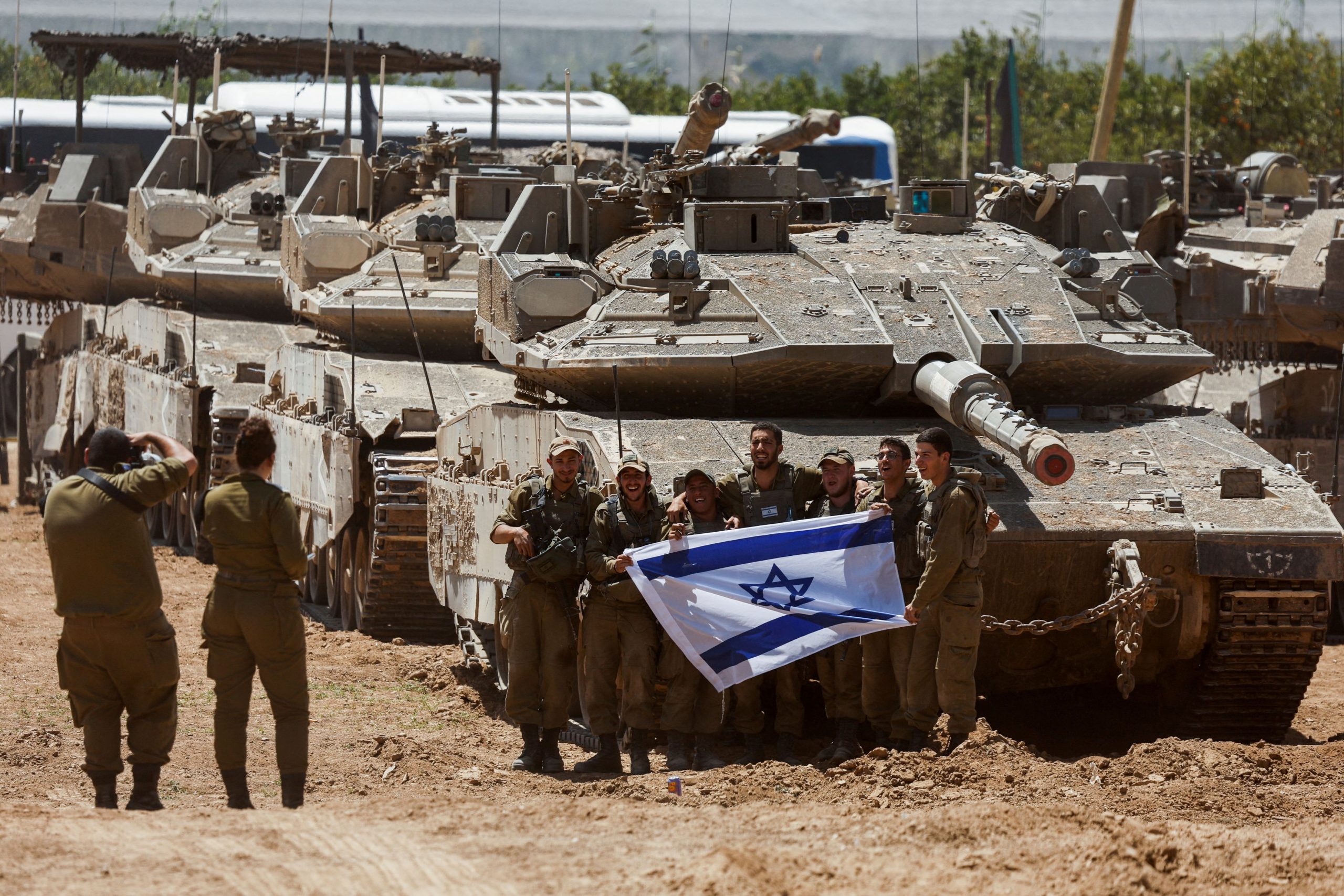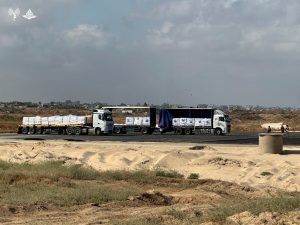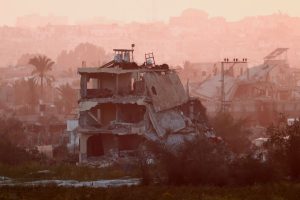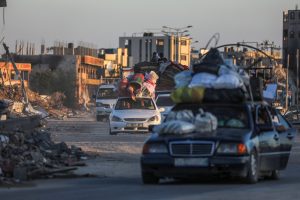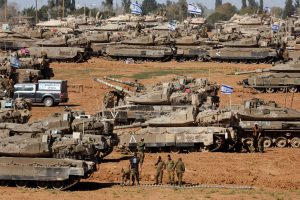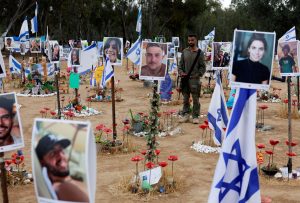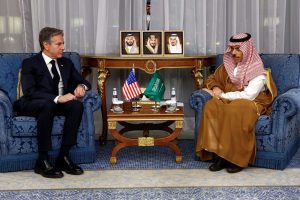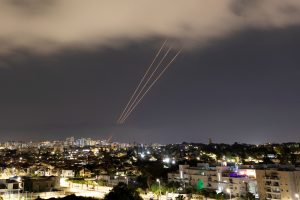TEL AVIV—Every evening on TV news, Israelis get the latest on the Gaza war—cease-fire and hostage talks, Israeli military casualties, battlefield analysis and coverage of the Oct. 7 attacks by Islamist militant group Hamas that sparked the conflict.
One thing that is almost always missing: the people of Gaza.
Israel is watching one war unfold in Gaza, while much of the rest of the world is seeing a different one, with footage of the destruction caused by Israeli airstrikes in the densely populated enclave and sometimes gruesome images of Palestinians killed in the fighting .
That split screen helps explain the widening gulf between an Israel that feels isolated and misunderstood and outsiders who have shifted their attention from the horrors of Oct. 7 to the damage inflicted by Israel’s campaign to destroy Hamas. That gap in perspective could grow in coming weeks if Israel’s military expands its effort to destroy the remaining Hamas battalions in the crowded southern Gaza city of Rafah.
On Israeli television, there is virtually no footage of dead Palestinians and only some scenes of the destruction, according to media executives, journalists, media analysts and ordinary Israelis. Many Israeli Jews, who usually consume news in Hebrew, also say they rarely come across explicit footage of Gaza on their smartphones, though they are aware there has been widespread destruction and a high death toll.
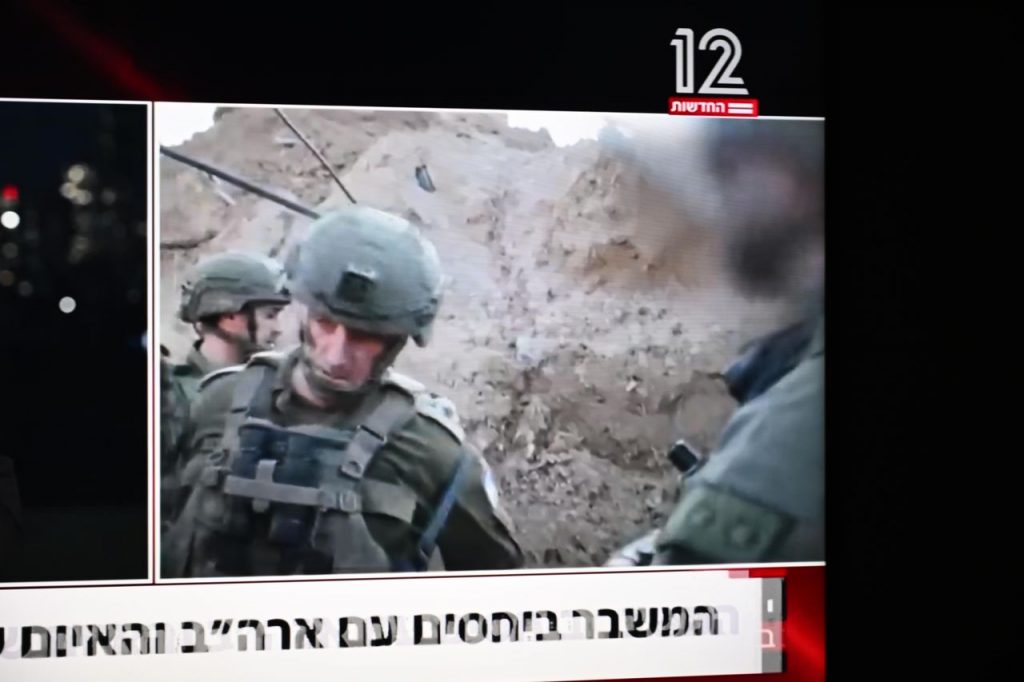
Television plays an outsize role as a news source in Israel—unlike the U.S. and Europe, where most people’s primary source is social media.
Photographs by Tanya Habjouqa | NOOR for The Wall Street Journal
Nearly two-thirds of Israeli Jews said they had seen a few or no images of the damage, according to an April survey by the Israel Democracy Institute, a nonpartisan research center. Just over a third said they had seen a lot, either through Israeli media or social media.
“You see everything about the war on Israeli television except for the people of Gaza,” said Shuki Tausig , editor of the Seventh Eye, an Israeli publication that focuses on the country’s media. “Right now, Israeli media can’t cope with a complex reality. They know that their viewers don’t really want to see images of their enemy dying, so they just don’t show it.”
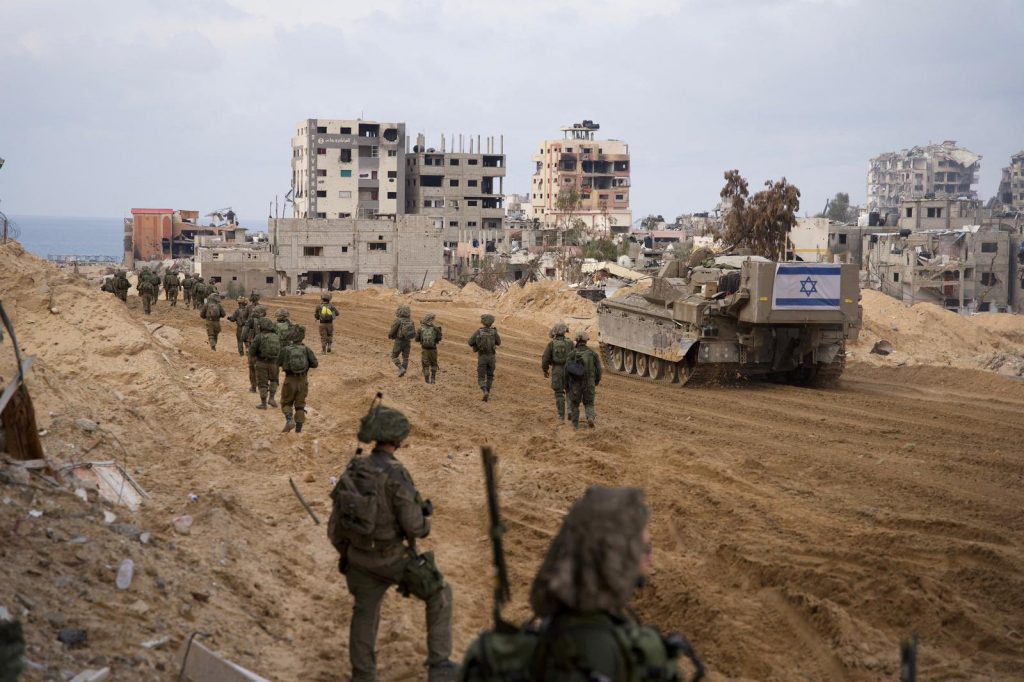
Israeli soldiers operate in the Gaza Strip amid the ongoing conflict between Israel and the Palestinian Islamist group Hamas, in this handout picture released on January 2, 2024. Israel Defense Forces/Handout via REUTERS
Spokespeople for Israel’s leading television channels—Kan 11 as well as channels 12, 13, and 14—declined to comment or didn’t respond to a request. Channel 12 provided The Wall Street Journal with several examples of recent newscasts that included scenes of bombed out buildings and ruins in Gaza and civilians talking about their plight, including the lack of food. There were no images of dead civilians.
Ayala Panievsky, an Israeli academic who lives in London, said there is a big split between what she sees on television in London and what friends and family see back in Israel. “I’ve never seen such a big difference in perspective before,” she said.
One recent night in Israel, an anchor on Kan 11, Israel’s public broadcaster, interviewed Stav Sela , whose 32-year-old brother Ram was killed along with hundreds more at the Nova music festival by Hamas militants during the Oct. 7 attacks that Israeli authorities say left 1,200 dead and more than 240 hostages. Stav described Ram as ״a meter ninety-five of curls” who loved music. She and her musician friend, Ligal, sang a song written in his memory.
Several time zones away in the U.S., CNN viewers watched a dispatch from Gaza about an alleged Israeli airstrike that killed 10 children, including a 9-year-old girl playing foosball with her friends on a crowded street, some of the more than 34,000 dead in Gaza since the war began, according to Palestinian authorities. A group of men placed the body of another girl, aged 10 and clad in pink pants, into a body bag, as relatives wailed in grief.
The divide in perspective is most stark between Israel and the neighboring Arab world. The region’s leading broadcaster, Qatar-headquartered Al Jazeera, offers nearly nonstop coverage of the Gaza campaign, often with explicit images of destruction and civilian deaths. It has shown very little footage from the initial attacks on Oct. 7 that sparked the war and has regularly featured analysts who cast doubt on Israeli accounts of the atrocities.
A March survey found that more than 80% of Palestinians don’t believe Hamas committed any atrocities on Oct. 7 despite widespread evidence, said Khalil Shikaki, director of the West Bank-based Palestinian Center for Policy and Survey Research. Those who had seen online videos of the attacks were 10 times as likely to believe Hamas had committed atrocities as those who hadn’t seen videos, Shikaki said.
“And that tells you the importance of sources of information,” he said. “If you do not watch, you don’t believe.”
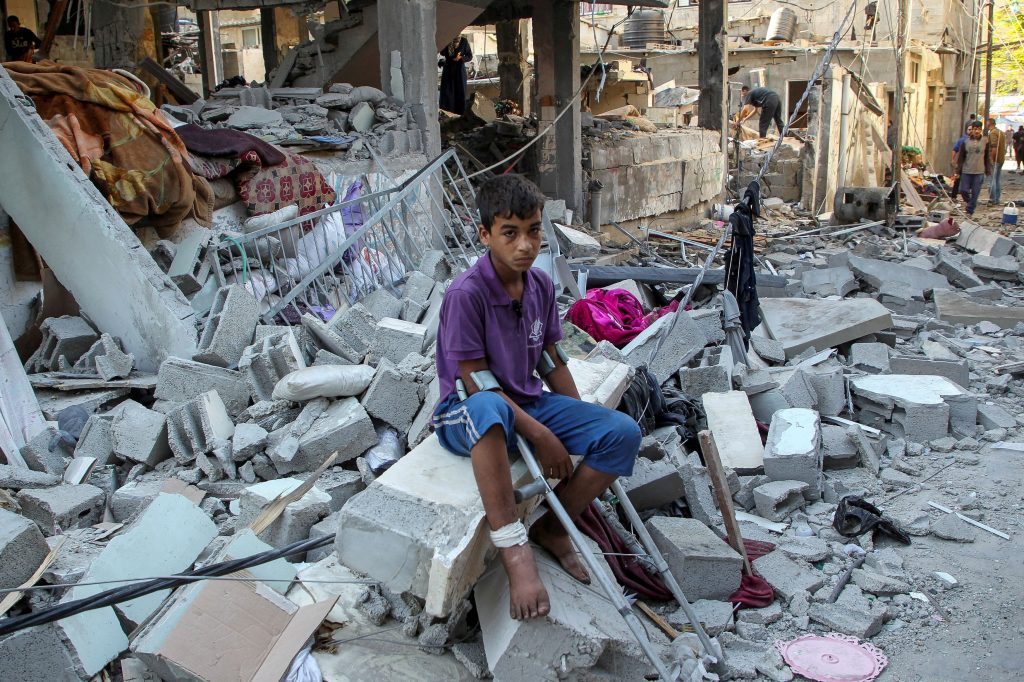
A wounded Palestinian sits on debris at the site of an Israeli strike on a house, amid the ongoing conflict between Israel and the Palestinian Islamist group Hamas, in Rafah, in the southern Gaza Strip May 9, 2024. REUTERS/Hatem Khaled/File Photo
Israel’s government on May 5 shut down the local offices of Al Jazeera under a new law that gives Israel the power to ban foreign news organizations deemed to be a threat to national security. Israel seized Al Jazeera’s equipment and blocked its broadcasts and website. Al Jazeera and Israeli rights groups criticized the move as undemocratic.
Daniel Levy, an economics professor at Bar-Ilan University, said he and his wife think they are not getting the whole story from Israel’s media, and occasionally watch Al Jazeera in English to see the other side. He said he could still access the network on his Smart TV and through YouTube despite the Israeli ban.
Levy said Al Jazeera is very biased against Israel, and he mistrusts the official death toll from the conflict given by the Palestinian authorities. “But, given our trauma of October 7th, I worry that many Israelis have difficulty seeing faces behind the numbers of Palestinians that have died, which makes Al Jazeera’s reporting with the images, which are often hard to watch and heartbreaking, particularly important,” he said.
Inside Israel, the Oct. 7 attack is still an open wound , a 9/11 moment on a bigger scale that shattered the feeling of relative safety many Israelis enjoyed in recent years. It wasn’t just an attack; it was an armed invasion, where people were killed in their homes or taken from their villages.
In such a small country, many Israelis feel a personal connection with the victims or hostages, partly because it could just as easily have been them.
Israeli journalists, who are a tightknit community, not only covered the attack, but some were victims themselves, including a news photographer of a major Israeli news site killed by militants.
Images of the hostages are everywhere —rows of pictures in Tel Aviv’s airport, billboards along highways and cities, yellow ribbons tied to trees, cars and lapels of politicians and newscasters, empty tables in restaurants reserved for missing hostages, graffiti scrawled on the street that reads “Bring Them Home Now.” At “Hostage Square,” where family members of the hostages hold vigil, a clock counts the days, hours and minutes they have been held against their will. The hostages are almost always featured on the nightly news broadcasts.
“The hostages are everything to us,” said Dorit Eldar, a retired physician standing on a Tel Aviv beach in a miles-long line of people who came out on a recent Saturday to press for the return of the hostages. “We have a covenant in Israel. You don’t leave people behind.”
Many Israelis feel the rest of the world is largely ignoring the plight of the hostages, the brutality of the Oct. 7 attack, and the tens of thousands of evacuees from the north and south of the country. Discussions of a long-term cease-fire or the reconstruction of Gaza are incomprehensible to many until the hostages come home, according to Dahlia Scheindlin, an Israeli public opinion expert.
“So in a way, everything is hostage to the hostages,” she said.
While the hostages are still being held, many Israelis may not want to see footage of civilian casualties—or care much, said Tamar Hermann , a senior research fellow at the Israel Democracy Institute. A March survey found that 80% of Israeli Jews said the country should have little to no consideration of suffering by the civilian population in Gaza in deciding whether to continue fighting. Hermann says that would likely change if the hostages were released.
A poll in early May by the Israel Democracy Institute found that more than half of Israelis said winning the release of the hostages was more important than invading Rafah to root out Hamas.
Some feel the media is too afraid to tackle public opinion by showing some of the innocent victims or by pressing Israel’s government on claims that Israel has impeded humanitarian aid.
Unlike the U.S. and Europe, where most people now get their information primarily from social media, television still plays an outsize role in Israel, with three-quarters of Israelis saying it is a key source of information, said Tausig, the Seventh Eye editor.
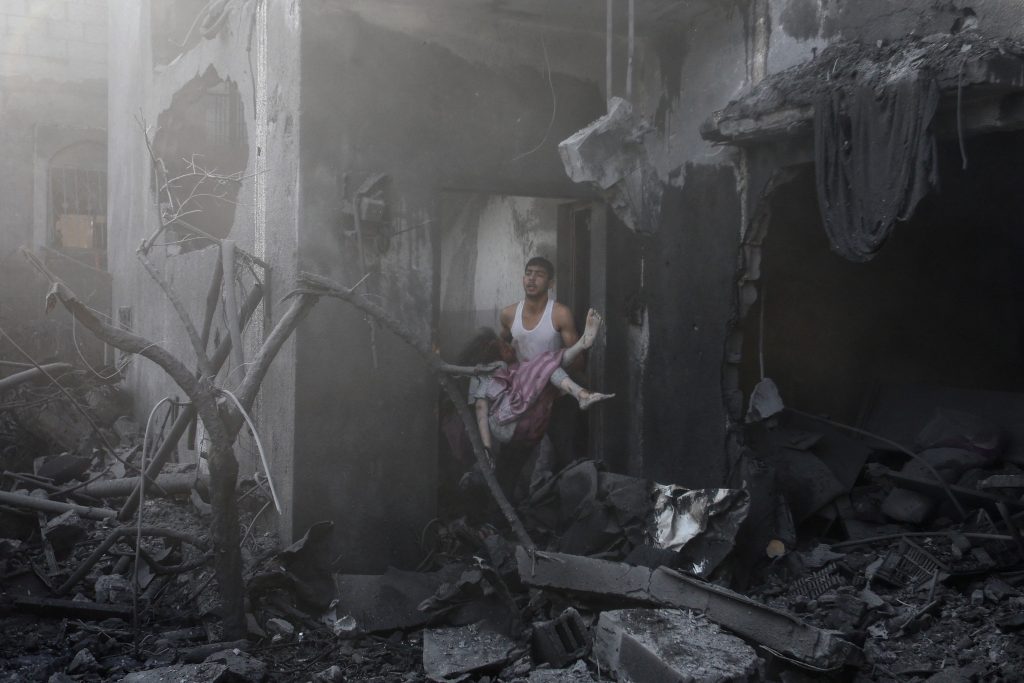
A Palestinian man carries the body of a deceased woman out of the rubble of a house damaged minutes earlier by Israeli strikes in Khan Younis, southern Gaza, October 11, 2023. REUTERS/Ibraheem Abu Mustafa Pulitzer Prize Winner for Breaking News Photography
Israel’s media is reflecting Israel’s broader shift to the right over the past two decades that followed the wave of suicide bombings during the major Palestinian uprising from 2000 to 2005 known as the Second Intifada, and a growing perception that prospects for peace with Palestinians are dim.
Some 60% of the Jewish Israeli population now self-identifies as right wing, with a quarter centrist and 11-14% as left, according to Scheindlin. Support for a two-state solution has declined over time to about a quarter of Jewish Israelis.
Aryeh Vanderhoof, an American-Israeli who lives in Jerusalem, has seen footage of dead civilians in Gaza online but doubts the death toll. He said he is saddened to think of civilian deaths, but also thinks the U.S. and many in the West are hypocritical.
“It feels like the rest of the world doesn’t understand what we’re up against,” he said. “You can’t make peace with someone whose way of life is to kill you.”
Israeli media has also shifted to the right, especially amid a long-running effort by Prime Minister Benjamin Netanyahu to portray the media as left-wing and unpatriotic, according to Panievsky, a fellow at City University in London who specializes in populism and the media. During the 2019 election, his campaign erected giant billboards with the faces of four prominent Israeli journalists, saying: “They Won’t Decide.”
Panievsky says many of the 45 Israeli journalists she interviewed in recent years said they had intentionally shifted their coverage to the right or censored themselves, including being more wary of using the word “occupation” when alluding to Israel’s occupation of the West Bank. Six said they hired bodyguards after receiving death threats for their coverage.
The Prime Minister’s office declined to comment.
Israeli television rarely shows Arabs on its screens—not even the Arab Israelis who make up about 20% of the population. Over the past seven years of monitoring, the Seventh Eye found that interviews or screen-time featuring Arab Israelis climbed from 2% to 4%, before falling back in the past year, especially since Oct. 7.
Mohammad Magadli , an Arab-Israeli journalist, is one of the few Arab journalists reporting on mainstream Hebrew language news channels. He lives the split screen daily running back and forth from the Arabic language radio station Nas in Nazareth to the studios of Channel 12 near Jerusalem.
“It’s moving between two worlds,” he said.
Since Oct. 7, he says he has faced a public backlash to his media appearances on Israeli television including death threats and calls for his firing. One Likud party member said on X that Magadli isn’t loyal and should be fired after he spoke on air about the lack of humanitarian aid in Gaza. After he said on air that he had spoken to a family member in Gaza to discuss food prices, hundreds of posts on social media called for firing him for having ties to the enemy.
Magadli says he is just trying to do his job. “The basic things that we need to do is to deliver to our people what’s going on, you know?” he said. “And the Israeli people really don’t know what is going on in Gaza.”
Yonit Levi, an anchor also at Channel 12 and co-host of the “Unholy” podcast, said Western countries struggle to understand the scale of what Israel suffered on Oct. 7. She said television executives had debated how much of the Oct. 7 atrocities to show and whether they should show more of Gaza.
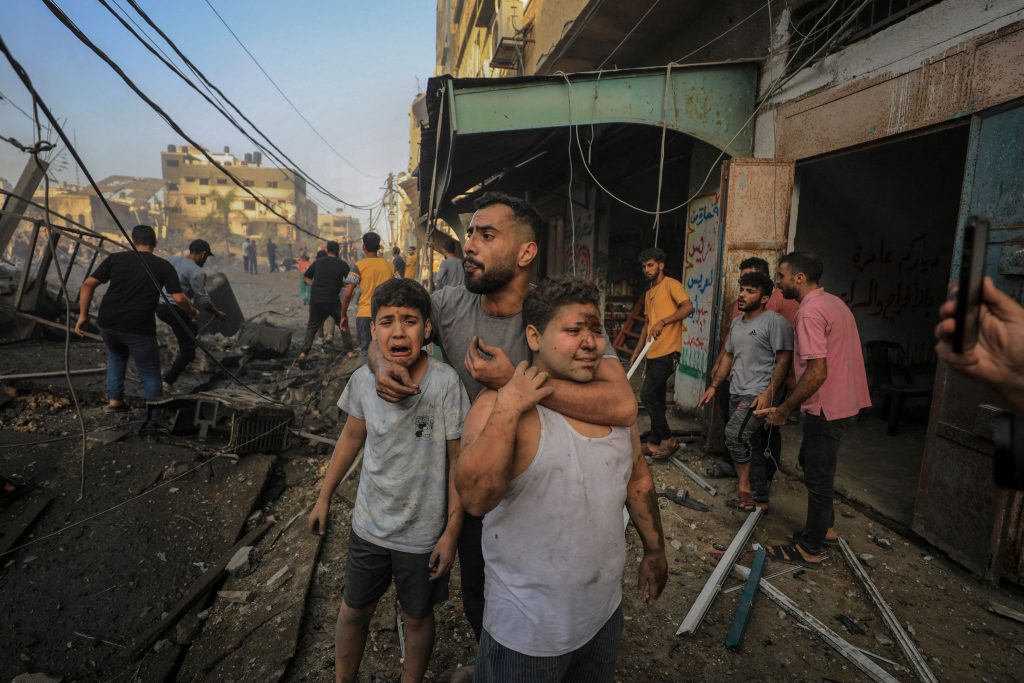
A man holds his two nephews as Palestinians search for victims of an Israeli strike on a residential building in Gaza City, October 25, 2023. REUTERS/Yasser Qudih Pulitzer Prize Winner for Breaking News Photography
“We are trying the best we can,” she said. “Know that we are having these conversations every day.”
Write to David Luhnow at david.luhnow@wsj.com
